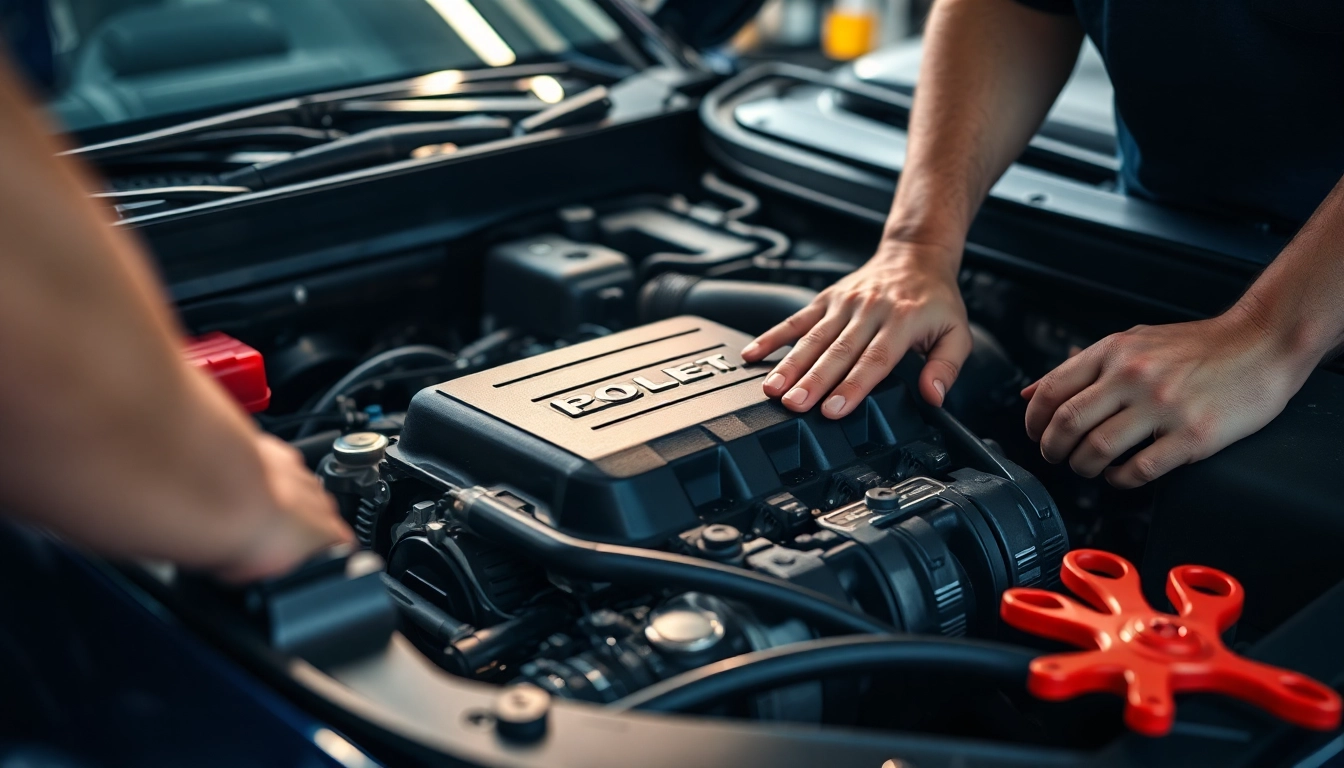
Essential Oil Change and Engine Checkup Tips for Vehicle Longevity
Understanding the Importance of Oil Change and Engine Checkup
For vehicle owners, maintaining their automobile’s performance is paramount. One of the most crucial aspects of automotive maintenance is routine oil changes and engine checkups. These services not only prolong the life of your vehicle but also enhance its efficiency and reliability. Regular maintenance routines, including an oil change and engine checkup, can save you significant costs down the road and ensure a safer driving experience. In this article, we’ll explore the importance of these practices in depth.
Why Regular Oil Changes Matter
Oil is the lifeblood of your engine. It lubricates moving parts, reduces friction, and helps to dissipate heat. Over time, oil can become contaminated with dirt, debris, and combustion by-products, causing it to lose its effectiveness. Regular oil changes help ensure that your engine operates smoothly and efficiently. Here are some reasons why these changes are essential:
- Engine Performance: Fresh oil ensures optimal lubrication, which keeps engine parts moving without friction, resulting in better performance.
- Fuel Efficiency: Clean oil improves fuel efficiency by allowing the engine to run more smoothly, which can lead to less fuel consumption.
- Engine Longevity: By changing the oil regularly, you help to prevent sludge build-up and wear on engine components, which can extend the lifespan of your vehicle.
- Prevention of Major Repairs: Regular oil changes can help detect issues early, potentially avoiding costly repairs associated with engine failure.
Significance of Routine Engine Checkups
Alongside oil changes, regular engine checkups are crucial for maintaining a vehicle’s health. These checkups typically include inspecting various engine components, checking for fluid leaks, inspecting belts and hoses, and evaluating exhaust systems. Key benefits of routine engine checkups include:
- Early Detection of Problems: Regular inspections can uncover potential issues before they escalate into severe problems, saving you from costly repairs.
- Enhanced Safety: Ensuring that the engine and its components are functioning properly promotes road safety, reducing the chances of breakdowns or accidents.
- Protecting Your Investment: Regular maintenance can help maintain your vehicle’s resale value, as a well-maintained engine is a significant selling point.
- Compliance with Warranty Requirements: Many manufacturers require routine maintenance to keep warranties valid; regular checkups fulfill this obligation.
Common Misconceptions About Oil Changes
There are several misconceptions surrounding oil changes that can lead to neglecting this critical service. Some common myths include:
- “Oil Changes Are Only Necessary Every 5,000 Miles”: While it was once common practice to change oil every 3,000 to 5,000 miles, advancements in oil technology have extended this range for many newer engines. Always refer to your owner’s manual for specific recommendations.
- “You Can Use Any Oil for My Engine”: Different engines require different oil types. It’s crucial to use oil that meets the specifications set by the manufacturer.
- “Synthetic Oil Isn’t Worth It”: Synthetic oils can provide better protection and performance in extreme conditions compared to conventional oils, making them a worthwhile investment for many drivers.
- “If My Car Isn’t Leaking Oil, I Don’t Need to Change It”: Just because there are no visible leaks doesn’t mean that the oil doesn’t need changing; it can break down and become contaminated without any signs.
Signs Your Vehicle Needs an Oil Change and Engine Checkup
Being aware of the signs indicating your vehicle may need an oil change or engine checkup can help you avoid breakdowns and costly repairs. Here are some key indicators:
Indicators of Low Oil Levels
Monitoring your oil levels is critical to maintaining engine health. Signs of low oil levels include:
- Oil Pressure Light: If the oil pressure light on your dashboard flickers or stays illuminated, it’s a clear signal that you may need an oil change or that your oil level is low.
- Performance Decrease: A noticeable decrease in engine performance, such as sluggishness or unexpected stalling, may indicate low oil levels.
- Oil Color and Consistency: Fresh oil is amber and somewhat translucent. Dark or gritty oil indicates contamination and the need for a change.
Engine Performance Issues to Watch For
Unexplained declines in engine performance can often be traced back to oil issues. Common engine performance problems include:
- Unusual Engine Behavior: Symptoms such as misfiring, rough idling, or a decrease in power can signal that the engine isn’t receiving proper lubrication.
- Increased Exhaust Emissions: A poorly lubricated engine may emit abnormal smoke or fumes; dark smoke can indicate oil burning, which is usually a red flag.
- Engine Overheating: Insufficient oil levels or ineffective oil can lead to increased friction and heat, causing the engine to overheat.
How to Detect Unusual Engine Noises
Awareness of unusual noises from your engine can be a proactive way to catch issues early. Listen for:
- Knocking or Ticking Sounds: These noises often indicate that there is insufficient oil supply or that the oil has become too degraded to lubricate effectively.
- Grinding Sounds: If you hear grinding noises, this could mean metal parts are making contact due to lack of lubrication and are at risk of permanent damage.
- Hissing or Popping Sounds: These may indicate overheating or other serious internal engine issues, necessitating immediate attention.
Step-by-Step Guide to an Oil Change and Engine Checkup
Performing an oil change and engine checkup requires the right tools, materials, and procedures to ensure efficiency and safety. Here’s a comprehensive guide:
Essential Tools and Materials Needed
- Oil Filter Wrench: To easily remove the old oil filter.
- Socket Set: Essential for loosening nuts and bolts if needed.
- Oil Drain Pan: To catch the old oil as it drains from the engine.
- Funnel: For pouring new oil without spills.
- New Oil: Ensure you have the type recommended by the vehicle manufacturer.
- New Oil Filter: Always replace the oil filter during an oil change.
- Gloves and Rags: For keeping your hands clean and wiping up spills.
Procedure for Conducting an Oil Change
Follow these steps carefully for a successful oil change:
- Prepare Your Vehicle: Park on a flat surface, turn off the engine, and allow it to cool.
- Locate the Oil Drain Plug: Use the socket set to loosen and remove the drain plug located beneath the engine.
- Drain the Oil: Allow the old oil to completely drain into the oil pan. Replace the drain plug securely once completed.
- Remove the Old Oil Filter: Use the oil filter wrench to remove the old filter, ensuring to get rid of any excess oil that might leak out.
- Install the New Oil Filter: Apply a small amount of new oil to the rubber ring of the new filter before installing it to ensure a proper seal.
- Add New Oil: Using a funnel, pour the new oil into the engine through the oil filler cap. Refer to your owner’s manual for the correct oil amount.
- Check Oil Levels: After adding new oil, wait a few minutes, then check the oil level using the dipstick and make sure it’s at the recommended level.
- Dispose of Old Oil: Properly dispose of the old oil and filter at a recycling center.
- Document Your Service: Keep a record of the date and mileage of the oil change for future reference and warranty compliance.
Steps for an Efficient Engine Checkup
When conducting an engine checkup, follow these steps for a comprehensive examination:
- Visual Inspection: Check for any visible leaks under the vehicle and examine belts and hoses for wear or cracks.
- Fluid Levels: Look at all vital fluids—coolant, brake fluid, transmission fluid—and top them off if necessary.
- Battery Condition: Inspect battery terminals for corrosion and ensure the battery is secured tightly.
- Air Filter Check: Remove and examine the air filter; replace it if it’s dirty or clogged.
- Exhaust System Inspection: Look for any signs of damage or leaks in the exhaust system, which can indicate underlying engine problems.
- Connect Diagnostic Tools: If you have access to an OBD2 scanner, connect it to your vehicle’s diagnostic port to read any error codes that may indicate issues.
Best Practices for Maintaining Oil and Engine Health
To ensure the longevity of your engine and the efficiency of your oil, adopting best practices is crucial. Here are some essential recommendations:
Recommended Oil Types and Their Benefits
Choosing the right oil is essential for optimal engine performance. Types include:
- Conventional Oil: Suitable for engines with simple designs and those experiencing low stress, conventional oil is an affordable option for older vehicles.
- Synthetic Oil: Engineered for superior performance; it provides better engine protection, improved fuel efficiency, and operates well at extreme temperatures.
- High-Mileage Oil: Designed for vehicles with over 75,000 miles, it includes additives that help prevent oil burn-off and minimize leaks.
Frequency of Oil Changes and Engine Inspections
Establishing a routine schedule for oil changes and engine inspections is vital. General guidelines suggest:
- Oil changes should typically be performed every 5,000 to 7,500 miles or as advised by the vehicle manufacturer.
- Engine inspections should occur bi-annually or before long trips to ensure everything is functioning optimally.
- Check oil levels monthly and maintain a record of oil change dates and inspections for reminders.
Other Maintenance Tips for Engine Longevity
In addition to regular oil changes and checkups, consider these maintenance tips:
- Use Quality Fuel: Choosing reputable fuel brands helps keep injectors clean and improves engine performance.
- Replace Spark Plugs as Needed: Worn spark plugs can lead to lower fuel efficiency and misfires, requiring timely replacement.
- Maintain Cooling System: Regularly check coolant levels and replace the thermostat and water pump as necessary.
- Rotate Tires and Check Alignment: Proper tire maintenance improves handling and fuel efficiency, indirectly benefiting engine health.
When to Seek Professional Help for Oil Change and Engine Checkup
While routine maintenance can often be performed by vehicle owners, there are times when professional assistance is necessary. Knowing when to seek help can prevent exacerbated issues.
Identifying Complex Issues Beyond DIY
Sometimes, engine issues may be too complex or require specialized tools. Indicators that you should consult a mechanic include:
- Persistent dashboard warning lights that do not turn off.
- Repeated engine misfires or stalling despite routine maintenance.
- Significant drops in oil levels or unusual oil leaks.
- Recurring overheating problems even after coolant inspections.
Choosing the Right Auto Repair Service
Finding the right service provider is crucial for your vehicle’s health. Consider the following factors:
- Certifications and Qualifications: Ensure the technicians are certified and have experience with your vehicle make and model.
- Reputation and Reviews: Research customer reviews on various platforms and word-of-mouth recommendations.
- Range of Services Offered: Choose a repair shop that provides comprehensive services, including oil changes, engine repair, and diagnostics.
- Shop Atmosphere: A clean, organized facility often indicates professionalism and attention to detail.
Understanding Costs and Services Offered
Before committing to a service, it’s important to understand the costs involved. When obtaining quotes:
- Ask for transparency about parts and labor costs.
- Understand what services are included in an oil change and checkup package.
- Inquire if the facility provides a warranty on parts and services; this can indicate confidence in their workmanship.
- Regularly compare prices among different auto repair shops to ensure you receive fair pricing without compromising quality.
